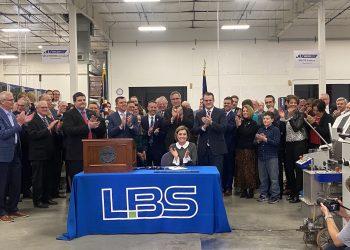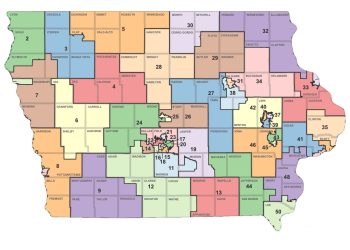Des Moines is rightly excited about plans to build multiple new sports facilities. But Iowa taxpayers ought to be concerned about the city’s request for $57 million in state subsidies to underwrite real estate developers’ profits. Cronyism of this sort has been a consistent problem across America, but there’s hope on the horizon.
States have been locked in a perpetual “arms race” since the Great Depression, when Mississippi used subsidies to poach companies from other states to jumpstart its own economic growth. “Get jobs quick” schemes turned out to be easy for politicians to campaign on, even though academic research finds that subsidy programs don’t create widespread economic benefits.
Iowa’s most famous recent example was the $214 million Apple received in 2017, but there have been a steady stream of smaller subsidies that add up to a startling total over time.
According to data gathered by Good Jobs First, from 2000 through 2019, Iowa provided over $3.8 billion in public subsidies for private corporations. A 2018 analysis by the Mercatus Center at George Mason University found that if Iowa eliminated subsidies, it could help all businesses by lowering its corporate tax rate by an astounding 36 percent—double the reduction of Iowa’s actual 2018 corporate tax reform. Or, it could reduce everyone’s taxes by 1.9 percent.
Put a different way, the last 20 years of corporate subsidies have cost Iowans at least $3,100 per household. It’s like a game of musical chairs: Politicians pull the seat out from under families and small businesses to privilege politically influential corporations.
Local leaders share the blame. Intercity competition can create even more waste than state subsidies. For example, Iowa Bankers Insurance and Services, Inc. received $2 million to move its headquarters only one mile from Johnston to Urbandale.
Pro-subsidy arguments hold that “industry clusters” create long-term economic growth, but most clusters are natural, rather than government-created. Automobile manufacturing is the classic example: Detroit’s metalworkers, centered between material suppliers and customers, provided the optimal place for carmakers in the early 20th century.
More than any subsidy, Des Moines’ central location at the confluence of major fiber optic lines makes it a natural place to build a data center. Yet Iowa and local governments have provided hundreds of millions to Amazon, Google, Microsoft, Apple, and Facebook to do just that. It’s the opposite of “Build it and they will come”—they were already coming.
Similarly, most subsidies don’t drive location decisions. Other factors, especially the availability of talented workers and access to supply chains and customers, are more important. Leading economic development researcher Timothy Bartik concludes that the average subsidy sways a company’s decision only about 12.5 percent of the time. In other words, almost 90 percent of subsidies are a complete waste of public resources.
Thankfully, many policymakers hate the arms race they feel trapped in. But they’re understandably fearful of the political cost of unilaterally disarming.
An interstate compact offers one idea. Part of the Constitution, this tool allows states to enter into contractual agreements, like simultaneously forswearing subsidies. Rep. Mary Mascher (D-Iowa City) made Iowa one of 16 states where this bipartisan legislation has been introduced. If successful, it could free up the estimated annual $95 billion spent on subsidies by state and local governments for more effective uses.
Regardless of the answer, here’s the question: Should Iowans continue throwing money at the hamster wheel of economic development?
















